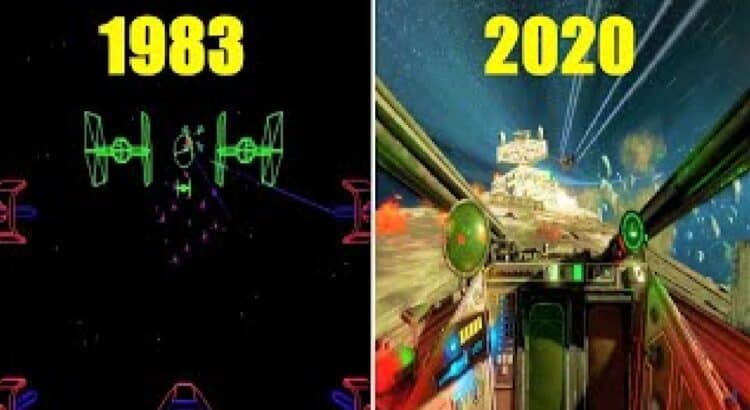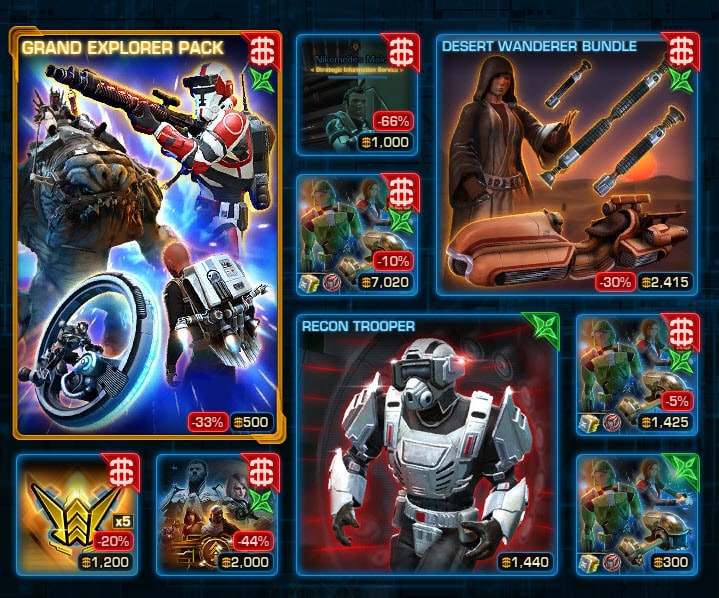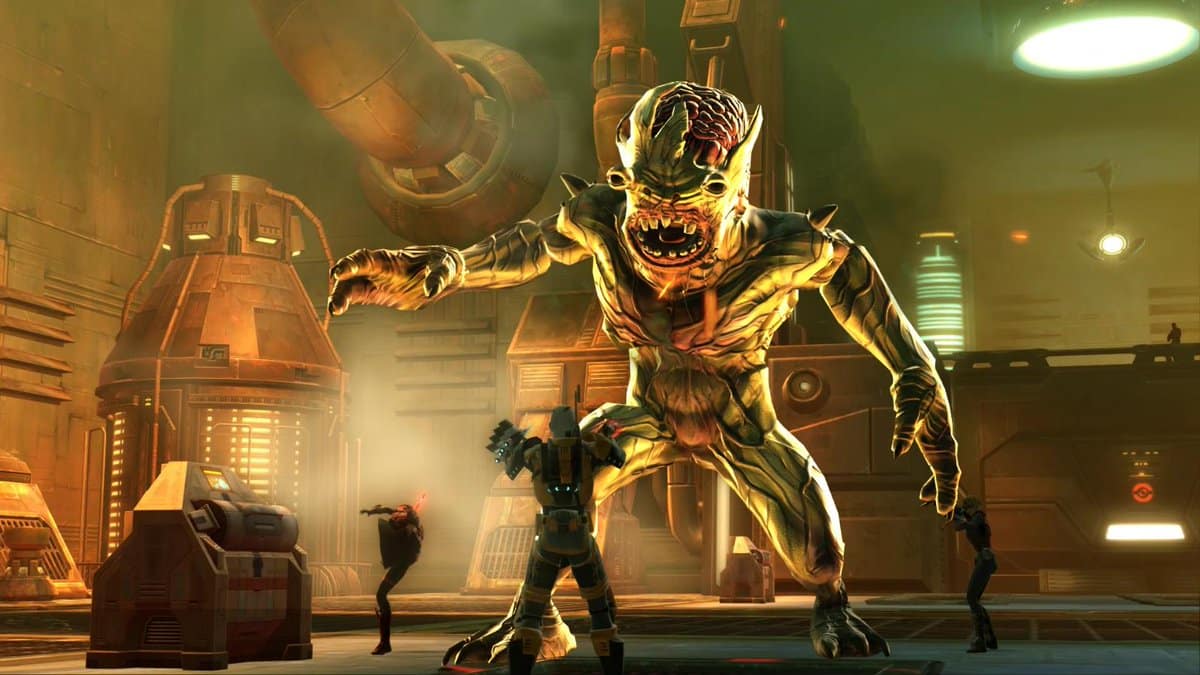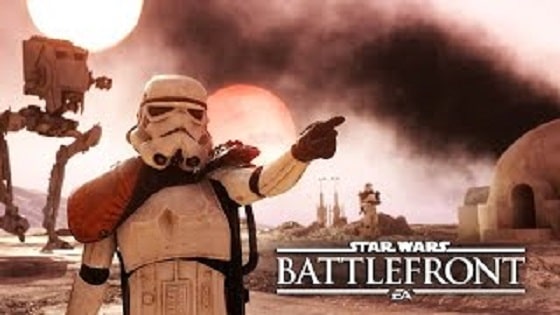The Star Wars franchise has captivated the hearts of millions of fans worldwide with its epic space battles, memorable characters, and fantastic storylines. Since the original movie’s release in 1977, the Star Wars universe has expanded into various forms of media, including video games. In this article, we will take a journey through the evolution of space battles in Star Wars games, starting from the early arcade days to the latest immersive experiences.
Star Wars: Arcade (1983)
Developed by Atari, Star Wars: Arcade was one of the earliest video games based on the franchise. Released in 1983, the game utilized vector graphics to render the iconic X-Wing as players took on the role of Luke Skywalker during the Battle of Yavin. The gameplay was simple but addictive, as players fought off waves of TIE Fighters and navigated through the Death Star’s trench, ultimately destroying it in a climactic battle. Star Wars: Arcade set the foundation for future space combat games in the series.
Star Wars: Return of the Jedi (1984)
This 1984 game by Atari and Parker Brothers allowed players to experience key moments from the movie, including the Battle of Endor. The game shifted away from the first-person perspective of its predecessor and featured an isometric viewpoint. Players controlled various vehicles, such as the Millennium Falcon and speeder bikes, while dodging obstacles and taking down enemy spacecraft. Although not as groundbreaking as the original arcade game, Return of the Jedi showcased diverse gameplay elements and laid the groundwork for future installments.
Star Wars: The Empire Strikes Back (1985)
In 1985, Atari released The Empire Strikes Back, a game that closely resembled its arcade predecessor but featured the Battle of Hoth as the primary setting. Players controlled a snowspeeder in a first-person perspective, taking down AT-ATs and AT-STs using tow cables or blasters. The game included the same vector graphics technology used in the original arcade title, providing an authentic and challenging experience for fans of the movie.
Star Wars (1991)
The 1991 release of Star Wars, developed by Beam Software and published by JVC, was a significant departure from previous space combat-focused games. This Nintendo Entertainment System (NES) game incorporated various gameplay elements, including side-scrolling action, puzzle-solving, and vehicle-based combat. Players controlled Luke Skywalker, Han Solo, or Leia Organa, each with unique abilities, as they navigated through different levels inspired by the original trilogy. Although space battles were less prevalent, the game expanded the scope of Star Wars games beyond the confines of spacecraft.
X-Wing (1993)
X-Wing, released in 1993 by LucasArts, marked a significant milestone in the evolution of Star Wars space battles. This flight simulator-style game allowed players to pilot various Rebel spacecraft, including the iconic X-Wing, as they fought against the Empire. Featuring 3D graphics and real-time combat, X-Wing was praised for its depth and authenticity, offering a detailed and immersive experience. The game’s success spawned several sequels and established a standard for future Star Wars space combat games.
TIE Fighter (1994)
Following the success of X-Wing, LucasArts released TIE Fighter in 1994, a game that put players in the role of an Imperial pilot. This title expanded upon its predecessor’s gameplay mechanics, featuring a more intricate storyline, improved graphics, and a broader range of playable spacecraft. TIE Fighter was praised for its engaging narrative and challenging missions, solidifying its place as one of the best Star Wars games to date.
Star Wars: Shadows of the Empire (1996)
Shadows of the Empire, released for the Nintendo 64 in 1996, was an ambitious title that combined various gameplay elements, including third-person shooter, space combat, and vehicle-based action. The game followed the story of mercenary Dash Rendar, taking place between The Empire Strikes Back and Return of the Jedi. The space battles were cinematic and action-packed, allowing players to engage in intense dogfights with iconic Star Wars ships, such as the Millennium Falcon and Slave I.
Star Wars: Rogue Squadron (1998)
Developed by Factor 5 and LucasArts, Rogue Squadron was released in 1998 for the Nintendo 64 and PC. This game expanded upon the space combat established in X-Wing and TIE Fighter, focusing on the adventures of Luke Skywalker and Wedge Antilles as they lead the elite Rogue Squadron. Featuring detailed graphics and a wide variety of missions, Rogue Squadron was well-received for its exciting gameplay and impressive audio design.
Star Wars Episode I: Battle for Naboo (2000)
Taking inspiration from the Rogue Squadron series, Battle for Naboo was released for the Nintendo 64 and PC in 2000. Set during the events of Episode I: The Phantom Menace, the game featured a mix of land and air combat, with players controlling various vehicles from the movie, such as the Naboo Starfighter. The game offered an immersive experience, with detailed environments and a dynamic score that adapted to the on-screen action.
Star Wars: Jedi Starfighter (2002)
Jedi Starfighter, released in 2002 for PlayStation 2 and Xbox, shifted the focus to the prequel trilogy, specifically the events leading up to Episode II: Attack of the Clones. Players assumed the role of Jedi Master Adi Gallia or Nym, a space pirate, as they piloted a variety of spacecraft, including the Jedi Starfighter. The game introduced Force powers for the first time in a Star Wars space combat title, adding an extra layer of depth and strategy to the gameplay.
Star Wars: Battlefront (2004)
Developed by Pandemic Studios, Star Wars: Battlefront was released in 2004 for PlayStation 2, Xbox, and PC. This game was a departure from previous space combat titles, focusing more on ground-based battles and featuring a third or first-person perspective. However, space battles were still present, with players engaging in epic dogfights using iconic ships from both the original and prequel trilogies. The game’s large-scale multiplayer battles helped solidify Battlefront’s place in the Star Wars gaming pantheon.
Star Wars: Battlefront II (2005)
The 2005 sequel to Battlefront expanded upon the original, offering more characters, maps, and vehicles. Battlefront II introduced space battles as a primary game mode, allowing players to pilot various spacecraft and engage in large-scale, objective-based battles. These battles included assaulting enemy capital ships and dogfighting with opposing starfighters, making for an engaging and dynamic experience.
Star Wars Battlefront: Renegade Squadron (2007)
Released exclusively for the PlayStation Portable (PSP) in 2007, Renegade Squadron continued the Battlefront series, focusing on a group of Rebel operatives led by Han Solo. The game introduced new gameplay elements, such as the ability to customize loadouts and a deeper single-player campaign. While space battles were present, they were not as expansive or in-depth as those in Battlefront II.
Star Wars Battlefront: Elite Squadron (2009)
Elite Squadron, released for the PSP and Nintendo DS in 2009, expanded upon the space
combat mechanics established in previous Battlefront games, Elite Squadron featured larger battles and the ability to seamlessly transition from ground to space combat. This unique feature allowed players to engage in a more dynamic, interconnected experience, as their actions on the ground directly impacted the space battles overhead.
Star Wars: The Old Republic (2011)
This massively multiplayer online role-playing game (MMORPG), developed by BioWare, was set thousands of years before the events of the main Star Wars saga. The Old Republic offered players an extensive narrative experience and the ability to choose their path as a member of either the Galactic Republic or Sith Empire. Space battles were incorporated as a component of the game, featuring on-rails combat sequences that allowed players to customize and upgrade their starships as they progressed through the story.
Kinect Star Wars (2012)
Released for the Xbox 360, Kinect Star Wars utilized the Kinect motion sensor to provide a unique, immersive experience. The game featured various gameplay modes, including a space combat section called “Starfighter.” Players controlled their starfighters using body movements and gestures, making for a distinctive but somewhat limited experience compared to traditional Star Wars space combat games.
Star Wars Battlefront (2015)
Developed by DICE, the 2015 Star Wars Battlefront was a reboot of the original Battlefront series, focusing primarily on the original trilogy. The game featured stunning visuals and large-scale multiplayer battles, both on the ground and in space. Space combat was presented as a separate game mode called “Fighter Squadron,” in which players engaged in fast-paced dogfights using various starfighters from the Star Wars universe.
Star Wars Battlefront II (2017)
The sequel to the 2015 Battlefront game improved upon its predecessor in various ways, including the addition of a single-player campaign and content from all three Star Wars trilogies. Space combat was further refined in Battlefront II, with a dedicated game mode called “Starfighter Assault” that featured objective-based battles and iconic locations from the movies. The game also introduced hero ships, such as the Millennium Falcon and Slave I, adding another layer of depth to the space combat experience.
Star Wars: Squadrons (2020)
Developed by Motive Studios, Star Wars: Squadrons was a space combat-focused game that offered an immersive experience for fans of the genre. Released for PlayStation 4, Xbox One, and PC, Squadrons featured a single-player campaign, as well as multiplayer modes that allowed players to pilot various starfighters from both the Rebel Alliance and Galactic Empire. The game’s emphasis on first-person cockpit views, intricate ship controls, and team-based gameplay marked a return to the roots of X-Wing and TIE Fighter while incorporating modern gaming technology and graphics.
Conclusion
The evolution of space battles in Star Wars games has seen a vast array of gameplay styles, graphical advancements, and innovative features. From the early vector graphics of the 1980s to the immersive, detailed experiences of modern gaming, space combat has consistently been a core element of the Star Wars gaming experience. As technology continues to advance and the Star Wars universe expands, fans can look forward to even more captivating and engaging space battles in future games.






